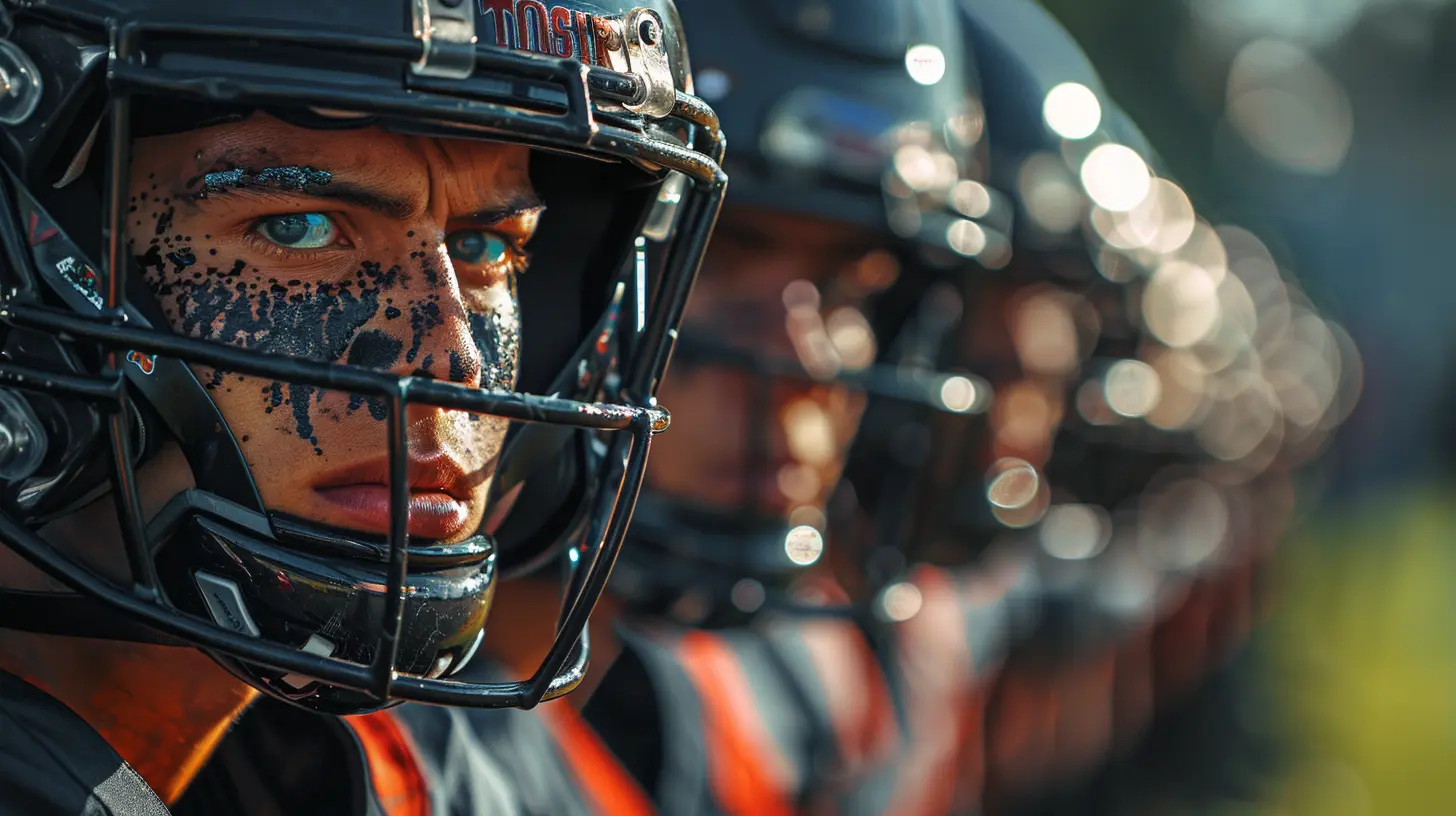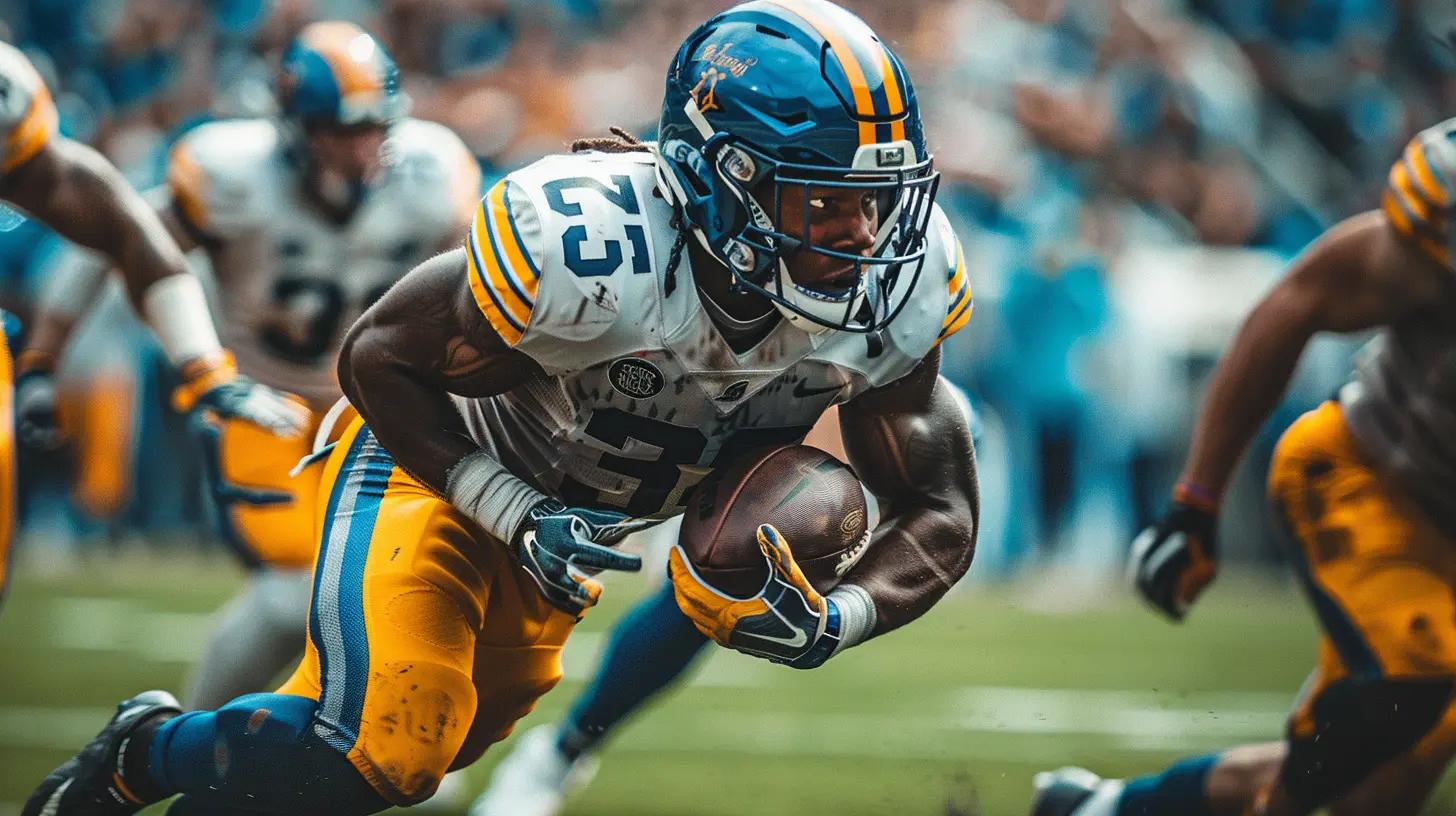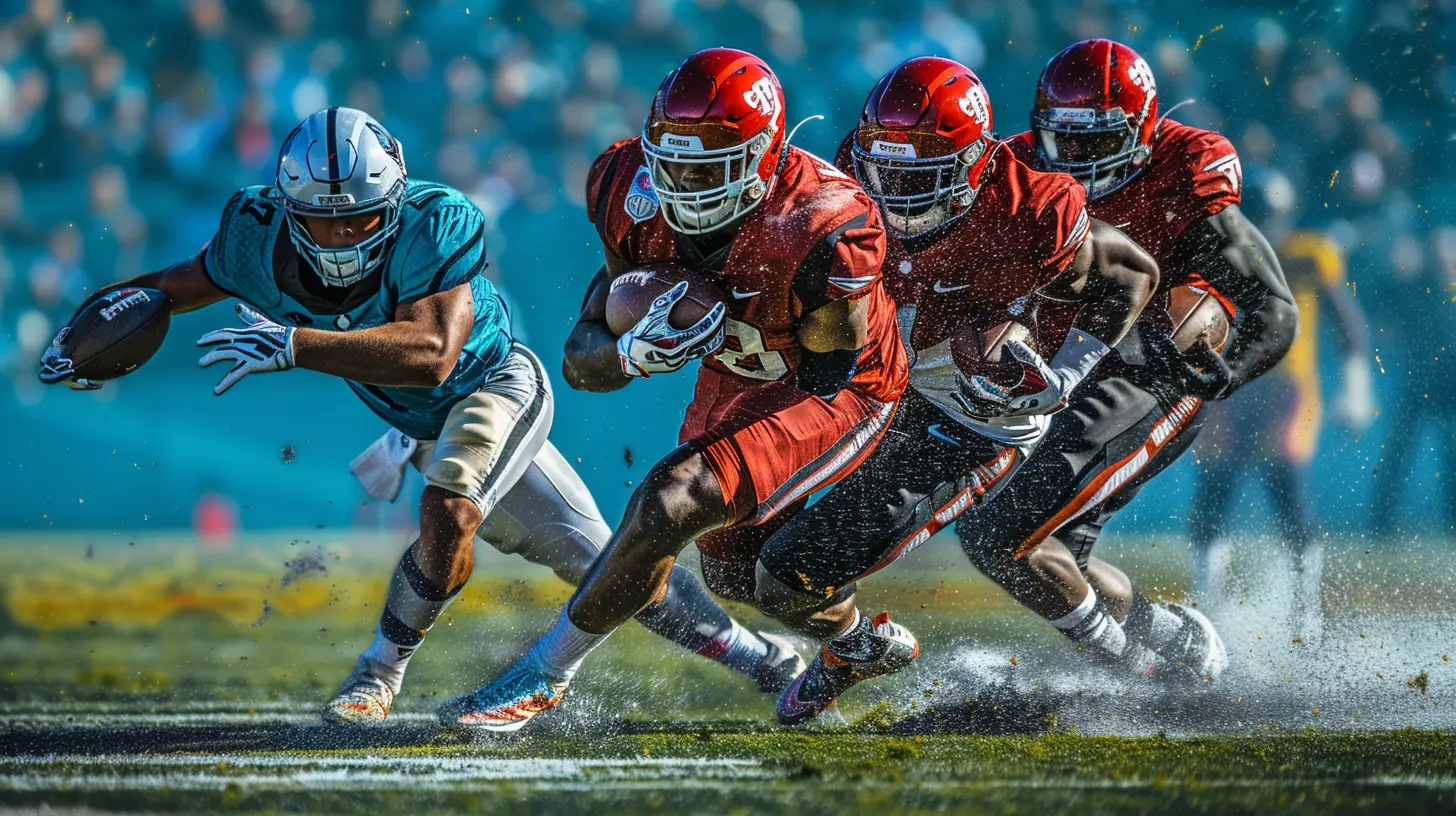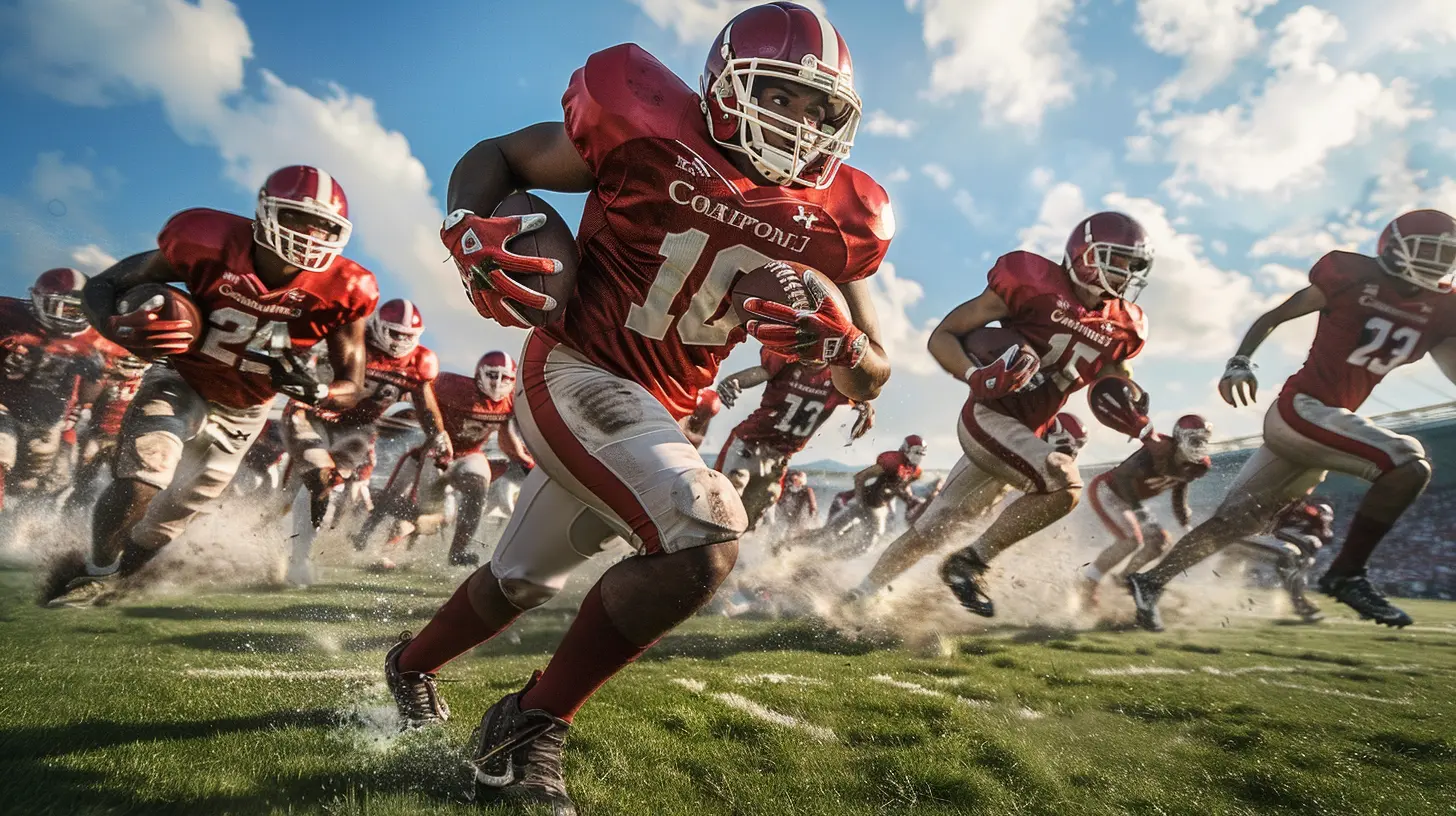The Importance of Spacing in Offensive Strategy
20 August 2025
When we think about offensive strategy in sports, the first things that come to mind are often speed, strength, and skill. But there's one underrated aspect that can make or break a team's attack: spacing. Yeah, spacing. It might not sound as flashy as a slam dunk or a touchdown, but trust me, it's just as crucial—if not more so—when it comes to orchestrating a successful offensive game plan.
In this article, we’re going to dive deep into why spacing is so important in offensive strategies across various sports, how it impacts play, and why teams that nail spacing are often the ones that clinch victory. So, whether you're a player, coach, or just a fan who wants to dive deeper into the tactical side of the game, you've come to the right place.

What Is Spacing in Offensive Strategy?
First things first, what exactly do we mean by "spacing"? In its simplest form, spacing refers to how players position themselves on the field, court, or ice in relation to their teammates and opponents. Good spacing ensures that players are spread out efficiently, creating room for the ball (or puck) to move and for players to exploit gaps in the defense.Think of it like a chessboard. If all your pieces are clustered in one corner, you're not going to have many options. But if they're spread out strategically, you’ve got control of the entire board. The same goes for sports. Proper spacing gives teams more options and better control of the game.
The Role of Spacing in Different Sports
Spacing is important in all sports, but it plays out differently depending on the game. Let’s break it down by a few popular ones:- Basketball: In basketball, spacing is often the difference between an open three-pointer and a contested shot. Teams that space the floor well—like the Golden State Warriors during their championship runs—create more room for shooters and slashers. Without proper spacing, defenses can collapse, making it nearly impossible to get a clean look at the basket.
- Soccer (Football): In soccer, spacing is key for creating passing lanes and opening up opportunities for through balls. Teams that master spacing on the field can stretch the defense, forcing them to cover more ground and, in the process, leaving gaps for strikers to exploit.
- American Football: Offensive spacing in American football is often referred to as "spreading the field." Teams that effectively use spacing can create mismatches, isolate defenders, and give their quarterback more passing options. It's no surprise that teams using spread offenses have seen a surge in yardage and points over recent years.
- Hockey: In hockey, spacing allows players to maintain puck control and set up offensive plays. A well-spaced team can manipulate the defense, create passing lanes, and generate high-quality scoring chances.

Why Spacing Matters So Much
You might be wondering, "Why is spacing such a big deal?" Well, it comes down to a few key reasons:1. Creates Offensive Opportunities
Good spacing opens up the playing field and allows for more offensive opportunities. Think about it: when players are spaced out properly, defenders have to spread out too. This creates gaps in the defense that can be exploited for passes, drives, or shots. It’s like when you’re stuck in traffic—everyone’s bumper-to-bumper, and there’s no room to move. But on an open highway? You can fly.Basketball is a perfect example of this. When teams space the floor, it becomes easier to drive to the basket or dish the ball to an open shooter. The defense has to cover more ground, which naturally leads to breakdowns and open looks.
2. Reduces Defensive Pressure
Crowded offenses make it easier for the defense to apply pressure. If all the players are bunched up in one area, the defense can swarm, double-team, and block passing lanes with ease. With proper spacing, though, defenders are forced to cover more ground, making it harder to double-team without leaving someone wide open.In soccer, for instance, a team that spaces itself well can stretch the defense, making it harder for defenders to press or organize effectively. This can lead to more time on the ball for attackers, which is a massive advantage.
3. Enhances Team Chemistry
Good spacing allows for better communication and coordination among players. When players are well-spaced, they can see the whole field or court, making it easier to anticipate what their teammates will do next. This kind of synergy leads to smoother ball movement, faster decision-making, and a more fluid offense overall.Ever wonder why elite teams seem to move the ball effortlessly? Sure, a lot of that comes down to skill, but proper spacing sets the stage for that kind of telepathic teamwork. They know where their teammates will be, and everyone understands their role on the floor.
4. Maximizes Individual Talent
Ever notice how some players seem to thrive when they’re given more space to operate? That’s no accident. Talented players can exploit space with their speed, agility, and creativity. By spacing the floor or field properly, you give your star players the room they need to work magic.In American football, for instance, giving a speedy wide receiver space to operate can lead to huge gains. When a defense has to cover a wide area, it’s much harder to double-team a player like Tyreek Hill, making it easier for him to blow by defenders.

Common Spacing Mistakes and How to Fix Them
Even pro teams struggle with spacing sometimes. Here are a few common mistakes teams make and how they can be corrected:1. Overcrowding
Players bunching up in one area is a recipe for disaster. It limits passing options, makes it easier for defenders to swarm, and reduces the offensive team's ability to create space. The fix? Spread out! Coaches should emphasize the importance of maintaining distance and using the entire playing area.2. Poor Timing
Spacing isn’t just about standing in the right spot; it’s about moving at the right time. If players move too early or too late, it can throw off the entire offensive flow. Timing is everything in sports, and good spacing depends on players moving in sync with one another.3. Lack of Off-Ball Movement
Sometimes players think that spacing means standing still. Big mistake! Spacing is dynamic—players need to constantly move without the ball to create open lanes and passing options. A stagnant offense is easy to defend, no matter how well-spaced it is.
How to Improve Spacing in Your Offensive Strategy
Now that we’ve covered the basics, let’s dive into a few practical tips for improving spacing in your team’s offensive strategy.1. Use the Entire Playing Area
This might sound obvious, but you’d be surprised how often teams fail to use the full width and length of the field or court. Coaches should encourage players to spread out and take advantage of every inch of space available. This makes the defense cover more ground and opens up more offensive options.2. Emphasize Off-Ball Movement
Like we mentioned earlier, spacing isn’t static. Players need to be constantly moving to find open spots and create passing lanes. Set plays that include off-ball screens, cuts, and rotations can help force defenders to react and open up space for the ball handler.3. Communicate
Good communication is key to maintaining proper spacing. Players need to talk to each other constantly, calling out open spaces and helping teammates know where to move. A quiet team is often a disorganized team.4. Teach Spatial Awareness
One of the most underrated skills in sports is spatial awareness. Players need to constantly be aware of where they are on the field or court in relation to their teammates and the defense. Drills that focus on positioning and awareness can help players develop this critical skill.5. Utilize Spacing in Transition
Spacing isn’t just important in set plays; it’s crucial in transition as well. Teams that space the floor properly during fast breaks can create easy opportunities for quick scores. Coaches should emphasize the importance of spacing when pushing the ball up the field or court.Conclusion: Spacing Is the Silent MVP
While it might not be as glamorous as a highlight-reel play, spacing is the silent MVP of offensive strategy. Without it, even the most talented teams will struggle to score consistently. But with good spacing? The entire offense opens up, giving players more options, reducing defensive pressure, and creating a flow that can be nearly impossible to stop.So next time you’re watching your favorite team, keep an eye on how they space the field or court. Chances are, the teams that dominate offensively are the ones that have spacing down to a science.
all images in this post were generated using AI tools
Category:
StrategyAuthor:

Fernando Franklin
Discussion
rate this article
1 comments
Vance Warren
In the dance of offense, space is key, Where players weave like branches on a tree. With distance, creativity takes flight, Unlocking pathways, igniting the night. In this elegant ballet, strategy finds its grace, And victory blooms in open space.
September 1, 2025 at 11:06 AM

Fernando Franklin
Thank you for the beautiful imagery! You've captured the essence of spacing in offense perfectly—it's all about creating opportunities and enhancing creativity on the field.


